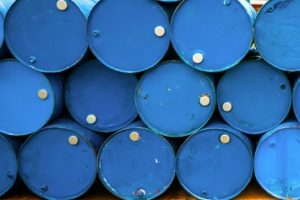As a hazardous waste generator you are required to determine your generator status or category by counting how much hazardous waste you have on-site. Yesterday we discussed steps for counting your hazardous waste and included wastes that are exempt from counting for your generator status, primarily because they are managed under other regulations, such as those for used oil or universal waste. Today we will take a look at hazardous wastes that you do not have to include in your monthly calculations.

TanawatPontchour / iStock / Getty Images Plus / Getty Images
Note: Always check with your state. Many states have stricter and/or additional hazardous waste requirements than the federal.
Don’t Count These Hazardous Wastes
When making your monthly hazardous waste determination, make sure not to include theses waste, basically because they have already been counted:
- Hazardous waste when it is removed from on-site accumulation, so long as the hazardous waste was previously counted once;
- Hazardous waste generated by on-site treatment (including reclamation) of the generator’s hazardous waste, so long as the hazardous waste that is treated was previously counted once; and
- Hazardous waste spent materials that are generated, reclaimed, and subsequently reused on site, so long as the spent materials have been previously counted once.
So, don’t add to your hazardous waste total and up your generator status by counting hazardous wastes more than once.
Counting Mixtures: VSQGs
The new Hazardous Waste Generator Improvements Rule, which is effective May 30, 2017, on the federal level, has done away with conditionally exempt small quantity generators and replaced the term with very small quantity generators (VSQGs). Again, the key to your generator status is the amount of acute and/or nonacute hazardous waste you generate in a calendar month.
Under certain conditions, VSQGs may mix a portion or all of its hazardous waste with solid waste and maintain their generator status even if the resultant mixture exceeds the VSQG quantity limits, i.e., generating 1 kilogram (kg) (about 2 pounds) of acutely hazardous waste a calendar month and 100 kg (about 220 lb) a calendar month of nonacute hazardous waste or residue from the cleanup of acute hazardous waste.
However, if the resulting mixture exhibits a hazardous waste characteristic (reactivity, ignitibility, corrosivity, toxicity) it is considered a newly-generated hazardous waste. The VSQG must count both the resultant mixture amount plus the other hazardous waste generated in the calendar month to determine whether the total quantity exceeds the VSQG calendar month quantity limits.
If a VSQG exceeds the VSQG monthly calendar limits, the next problem is to try to remain exempt from the permitting, interim status, and operating standards as a treatment, storage, and disposal facility. To do that, the VSQG must meet the independent requirements and conditions for exemption as either a small quantity generator (SQG) or a large quantity generator (LQG).
If a VSQG’s wastes are mixed with used oil, the mixture and any material produced from the mixture by processing, blending, or other treatment must meet the used oil management requirements found at 40 CFR 279.
Note: There are stricter mixture provisions for SQGs and LQGs.
